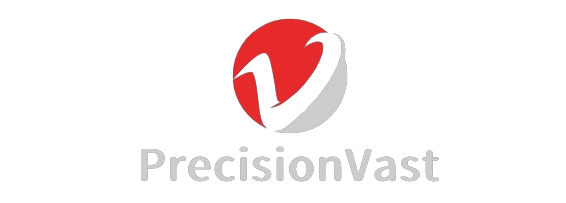Imagine you’re overseeing a production line for automotive parts, where delays from inconsistent molding push back shipments and inflate costs by 20-30%. These pain points—erratic quality, excess scrap, and prolonged lead times—can jeopardize your deadlines and bottom line in a competitive market. Enter aluminum die casting: a high-pressure process that delivers precise, lightweight components quickly, transforming challenges into efficient solutions in the aluminum die casting industry. For tailored support, explore our services .
1. Process in Aluminum Die Casting Industry
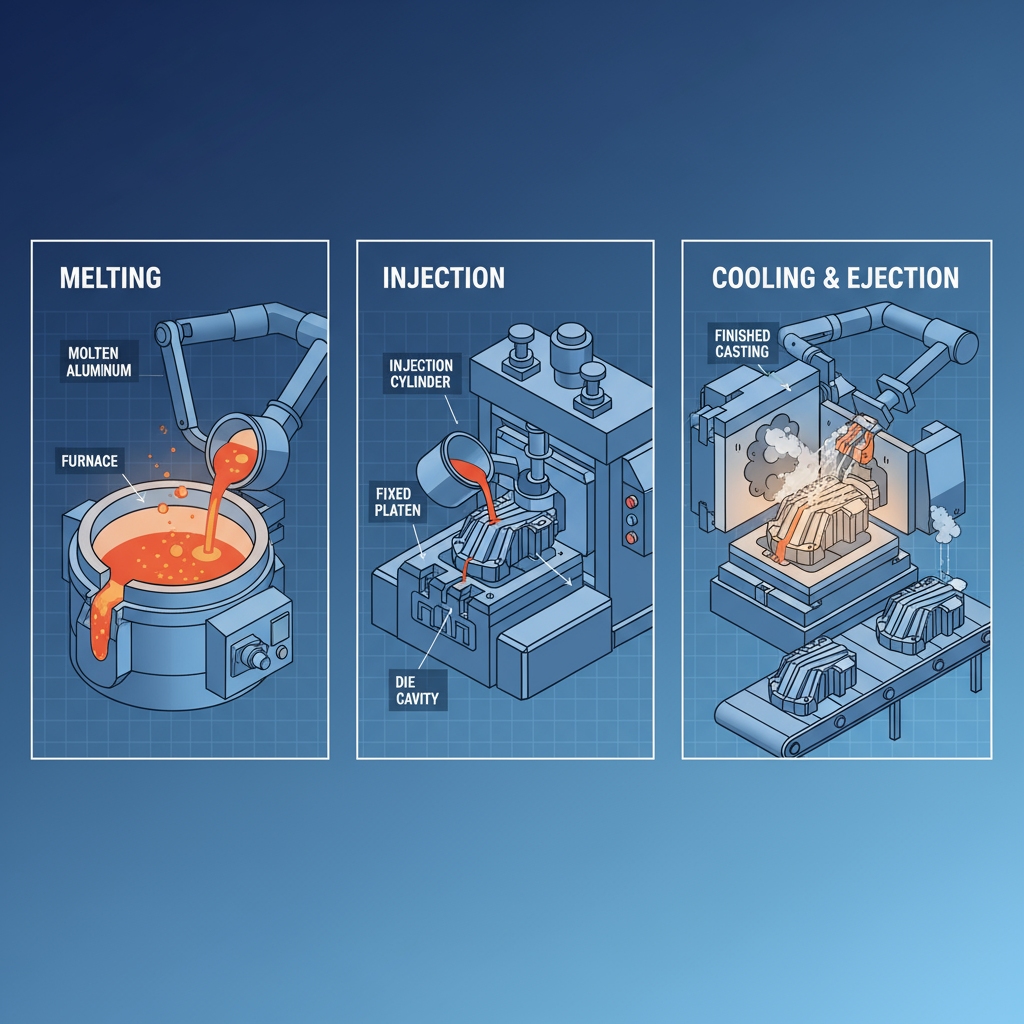
The process in the aluminum die casting industry forces molten aluminum into a steel mold under high pressure for rapid, precise part formation. You start by melting aluminum alloys at 1,200-1,300°F, then inject them at 1,000-20,000 psi into the die, where they solidify in seconds before ejection and minor finishing.
What Happens Step by Step?
This streamlined sequence minimizes downtime: prepare the die with lubrication, melt ingots in the furnace, inject and cool for high-volume output.
- Melting: Heats alloys uniformly to avoid impurities.
- Injection: High pressure fills complex shapes completely.
- Ejection: Automated arms remove the cooled casting swiftly.
Now that you see the flow, consider why pressure is key to avoiding defects.
Why High Pressure Matters
High pressure ensures the molten metal flows into every crevice, giving you parts with tolerances as tight as ±0.002 inches—far superior to gravity methods. This reduces porosity and boosts density for better stress resistance.
- Fills thin walls (down to 0.040 inches) effectively.
- Achieves smooth surfaces needing little post-processing.
- Speeds cycle times to 15-60 seconds per part.
Tools Needed for Success
Essential tools like steel dies, hydraulic presses, and furnaces form the backbone, with quality checks such as X-ray testing for internal flaws. Robust tooling lasts 100,000+ cycles.
- Dies: Reusable steel molds for precision.
- Presses: Deliver consistent force for reliability.
- Testing equipment: Ensures defect-free results.
Key Takeaway: Mastering these steps empowers you to produce reliable parts efficiently.
| Step | Key Benefit | Time Involved | |
|---|---|---|---|
| Melting | Uniform liquidity | 10-15 min | |
| Injection | Precise filling | Seconds | |
| Ejection | Quick release | 5-10 sec |
This efficiency highlights why die casting outpaces traditional methods, cutting lead times by up to 70%.
2. Advantages in Aluminum Die Casting Industry
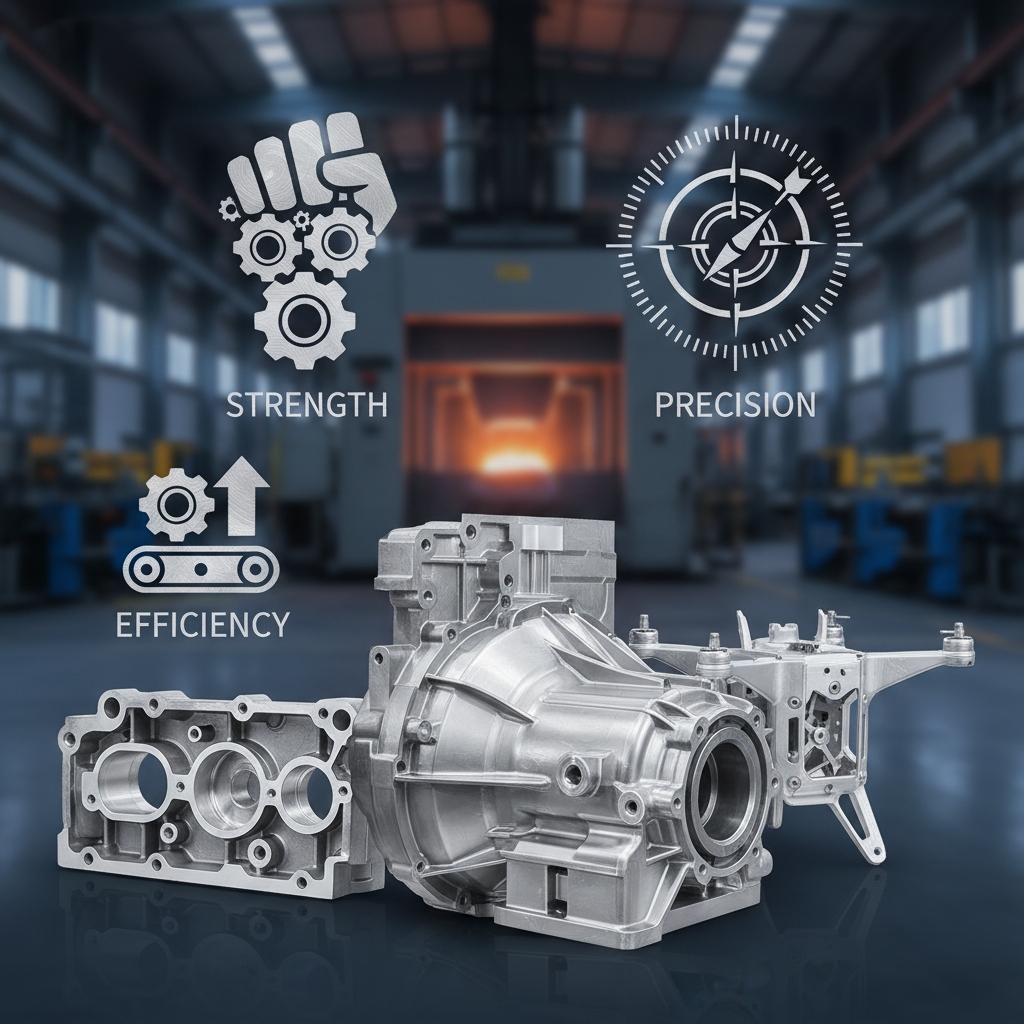
Advantages in the aluminum die casting industry include exceptional precision, lightweight strength, and cost savings for high-volume runs, making it ideal for demanding B2B applications.
Boosting Strength and Precision
Aluminum’s density at 2.7 g/cm³ means lighter parts without sacrificing durability, perfect for automotive or machinery needs. Precision tolerances reduce machining expenses.
- Tight tolerances (±0.002 inches) for complex geometries.
- Smooth finishes (Ra 1-3 μm) minimizing polishing.
- Enhanced mechanical properties via rapid solidification.
As you build on this strength, think about how it trims your waste.
Cutting Waste and Time
Die casting slashes material waste by 60% compared to machining, speeding cycles to under a minute. You can prototype quickly and scale seamlessly.
- Low scrap rates (<5%) through reusable dies.
- Fast production for thousands of units daily.
- Reduced energy use in high-volume setups.
Ideal for High Volumes?
Absolutely—produce at rates up to 500 parts per hour for orders of 10,000+ units, lowering per-part costs dramatically.
- Economies of scale beyond 1,000 pieces.
- Consistent quality across batches.
- Versatile for intricate designs.
Key Takeaway: These advantages position die casting as your ally for efficient, high-quality manufacturing.
For deeper insights, check our blog on die casting advantages .
| Advantage | Impact on Your Ops | Metric | |
|---|---|---|---|
| Precision | Fewer rejects | 99% yield | |
| Waste Reduction | Cost savings | 60% less scrap | |
| Volume Efficiency | Faster delivery | 500/hr max |
These perks reveal die casting’s role in optimizing B2B supply chains.
3. Design Tips for Aluminum Die Casting Industry
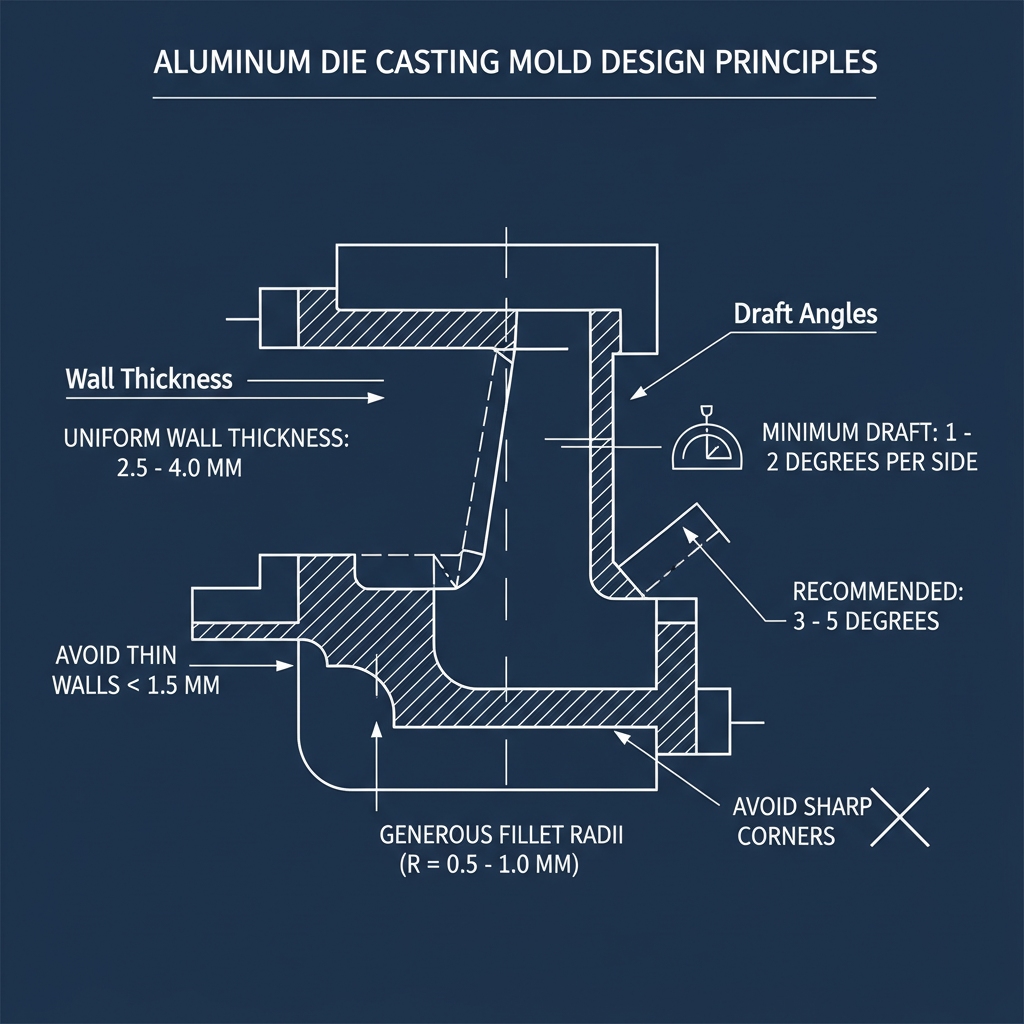
Design tips in the aluminum die casting industry focus on uniform walls, draft angles, and fillets to ensure flawless molds and minimize defects.
Avoiding Common Pitfalls
Sidestep shrinkage by planning for 0.5-1% contraction—early simulations catch issues. Simplify undercuts for easy ejections.
- Incorporate vents to release trapped air.
- Avoid sharp corners that cause stress cracks.
- Balance parting lines for clean separations.
With pitfalls in mind, let’s optimize your structure.
Wall Thickness Best Practices
Aim for 0.080-0.250 inches to balance strength and fluidity—thinner walls suit lightweight needs, but prototype first.
- Minimum 0.040 inches for intricate features.
- Uniform thickness prevents warping.
- Thicker bases (0.125+ inches) for load-bearing areas.
How to Optimize for Molds?
Draft angles of 1-3 degrees ease ejection; fillets (R 0.5 mm) reduce turbulence. Collaborate early for refinements.
- 1-2° draft on vertical walls.
- Rounded edges to enhance metal flow.
- Simulate filling to predict issues.
Key Takeaway: Smart design tips streamline your die casting success.
| Tip | Purpose | Recommended Value | |
|---|---|---|---|
| Wall Thickness | Strength & Flow | 0.080-0.250 in | |
| Draft Angle | Easy Ejection | 1-3° | |
| Fillets | Reduce Stress | R 0.5 mm+ |
These tips cut iteration costs by 25% in the aluminum die casting industry.
4. Comparisons in Aluminum Die Casting Industry

Comparisons in the aluminum die casting industry show it outperforming sand or permanent mold casting in precision and volume, though initial tooling costs more.
Vs. Green Sand Casting
Green sand uses disposable molds for low-cost prototypes but sacrifices smoothness—die casting yields better detail for production.
- Sand: Cheaper upfront, rougher finish (Ra 3-6 μm).
- Die: Smoother (Ra 1-3 μm), tighter tolerances.
- Waste: Sand higher due to mold disposal.
Transitioning to die pays off for scaling.
Vs. Permanent Mold Method
Permanent molds offer reusable metal for gravity pour, providing stronger parts than sand but less intricate than die casting.
- Permanent: Better strength, slower cycles (1-2 min).
- Die: Faster (15-60 sec), complex geometries.
- Cost: Die higher tooling, lower per unit.
When to Choose Die Casting?
Opt for die when precision and volume matter—unbeatable for 10,000+ parts needing fine details.
- High-volume, intricate: Die wins.
- Simple, low-run: Sand or permanent.
- Hybrid needs: Combine methods.
Key Takeaway: Die casting shines for demanding B2B precision over looser alternatives.
| Method | Precision | Volume Suitability | Cost per Part (High Vol) | |
|---|---|---|---|---|
| Green Sand | Low | Low-Medium | Medium | |
| Permanent Mold | Medium | Medium | Low-Medium | |
| Die Casting | High | High | Lowest |
This comparison illustrates die casting’s superiority for scalable projects.
5. Finishing Options in Aluminum Die Casting Industry
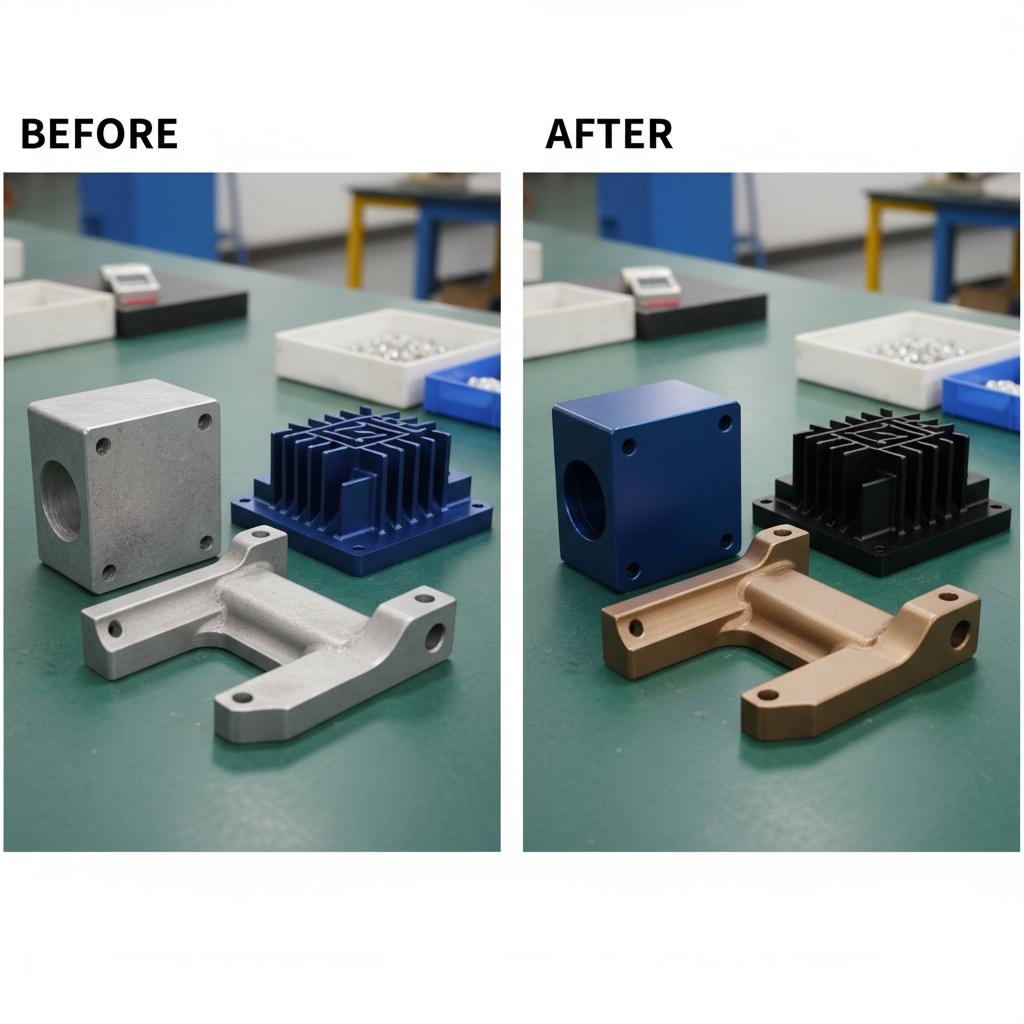
Finishing options in the aluminum die casting industry enhance durability and aesthetics through machining, coatings, and treatments.
Machining After Casting
Post-casting CNC machining refines holes or threads for exact fits, adding minimal time.
- Precision threading for assemblies.
- Deburring for safety.
- Tolerances to ±0.001 inches.
Building on basics, explore protective layers.
Surface Treatments Available
Anodizing boosts corrosion resistance for 20-30 year lifespan; powder coating adds color affordably.
- Anodizing: Hardens surface, electrical insulation.
- Powder coating: Thick, uniform finish.
- Shot peening: Improves fatigue strength.
Enhancing Durability
T6 tempering increases strength by 50%; combine with plating for protection.
- T6: Balances strength and ductility.
- Plating: Adds corrosion barrier.
- Testing: Verifies integrity.
Key Takeaway: Versatile finishing elevates your die-cast parts’ performance.
| Option | Benefit | Application | |
|---|---|---|---|
| Machining | Exact features | Threads, holes | |
| Anodizing | Corrosion resist | Outdoor use | |
| Heat Treatment | Strength boost | Structural parts |
These options enable customized solutions, reducing maintenance.
6. Alloys Used in Aluminum Die Casting Industry
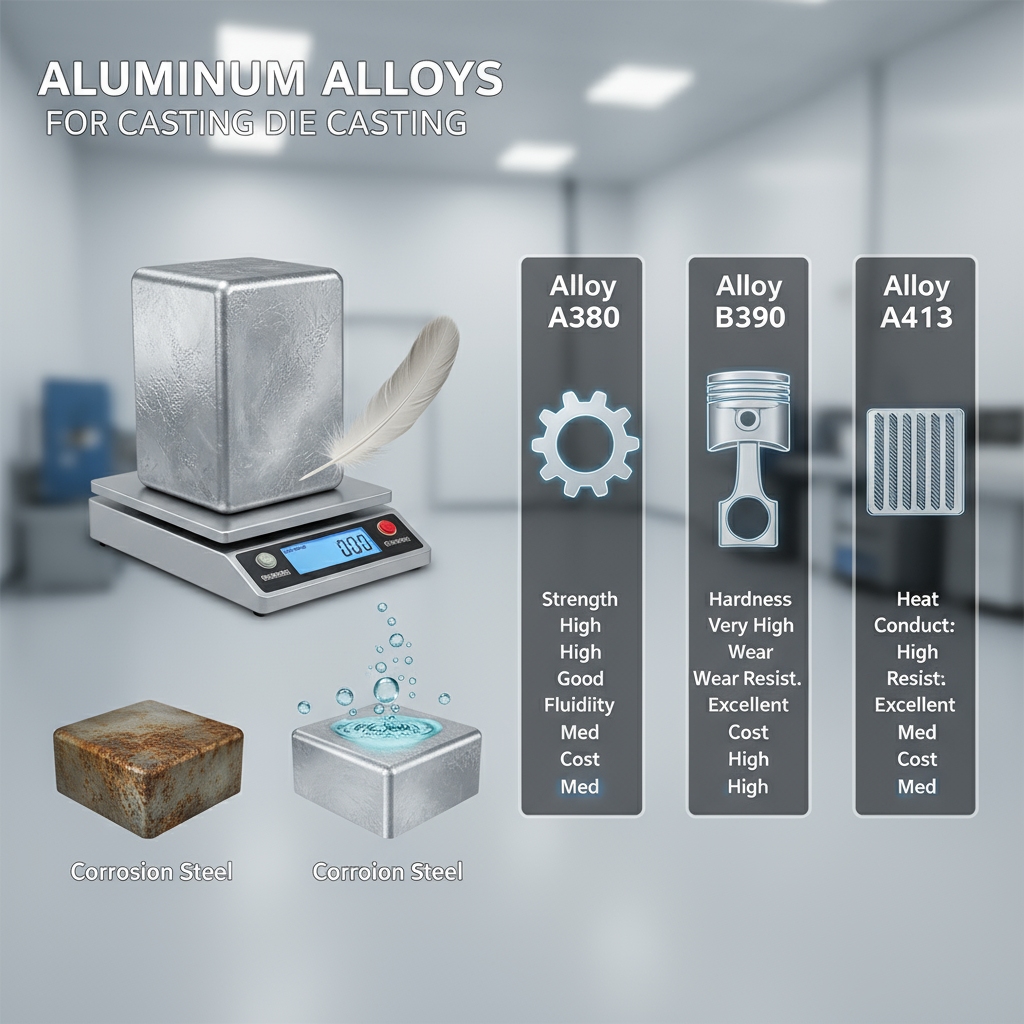
Alloys used in the aluminum die casting industry, such as A380 and A360, are selected for fluidity, strength, and corrosion resistance.
Top Choices Like A380
A380 offers good castability and pressure tightness for automotive blocks, balancing cost and performance.
- High fluidity for thin sections.
- Moderate strength (45 ksi yield).
- Machinable post-casting.
Now, see how to pair them right.
Matching Alloys to Needs
A360 suits corrosion-heavy apps like electronics; B390 excels in wear for pistons.
- A360: Excellent anti-corrosion.
- B390: High hardness (100 HB).
- A383: Intricate shapes.
Why Select the Right One?
Proper choice ensures reliability, avoiding porosity that hikes rework by 20%.
- Prevents defects like cracks.
- Tailors to thermal/strength needs.
- Recyclable for sustainability.
Key Takeaway: Alloy selection drives your project’s success.
Explore more with our aluminum alloys guide .
| Alloy | Strength (ksi) | Corrosion Resistance | Best For | |
|---|---|---|---|---|
| A380 | 45 | Good | Automotive | |
| A360 | 45 | Excellent | Electronics | |
| B390 | 60 | Fair | Wear parts |
Thoughtful selection minimizes risks and enhances value.
7. Applications in Aluminum Die Casting Industry

Applications in the aluminum die casting industry span automotive, machinery, and electronics for lightweight, precise parts.
Automotive and Machinery Uses
Die-cast brackets and transmissions reduce weight by 10-20%, boosting fuel economy in engines and valves.
- Engine components: Heat dissipation.
- Gears/fittings: Precision fit.
- Chassis: Strength without bulk.
Extending further, consider tech sectors.
Electronics and Beyond
Heat sinks manage thermal loads; medical tools leverage biocompatibility.
- Housings: EMI shielding.
- Connectors: Corrosion-free.
- Aerospace: Lightweight structures.
Tailoring for Your Sector?
Customize for marine pumps or food fittings—handles corrosive environments.
- Food: Smooth, cleanable surfaces.
- Marine: Saltwater resistance.
- Medical: Sterile finishes.
Key Takeaway: Broad applications make die casting indispensable.
| Sector | Key Parts | Benefit | |
|---|---|---|---|
| Automotive | Transmissions | Weight reduction | |
| Electronics | Heat sinks | Cooling efficiency | |
| Machinery | Valves | Leak prevention |
These applications advance B2B manufacturing versatility.
8. Sustainability in Aluminum Die Casting Industry

Sustainability in the aluminum die casting industry leverages recycling and low-waste processes.
Recycling Aluminum Benefits
Aluminum recycles with 95% less energy, reusable without quality loss, lowering carbon footprint.
- Infinite recyclability.
- Reduces mining needs.
- Cost savings on materials.
Moving to broader impacts, see waste reduction.
Reducing Environmental Impact
Minimizes scrap to under 5%; efficient furnaces cut emissions.
- Low energy per part.
- Reusable dies extend life.
- Less landfill waste.
Eco-Friendly Practices
Use water-based lubes and solar power; aim for ISO 14001 compliance.
- Energy-efficient presses.
- Scrap recovery programs.
- Emission controls.
Key Takeaway: Sustainable practices enhance your brand and bottom line.
Learn about our sustainable solutions .
| Practice | Environmental Gain | Business Perk | |
|---|---|---|---|
| Recycling | 95% energy save | Lower costs | |
| Low Waste | Reduced emissions | Compliance ease | |
| Efficient Tools | Resource conservation | Scalable ops |
These efforts drive cost efficiencies for B2B partners.
9. Cost Factors in Aluminum Die Casting Industry
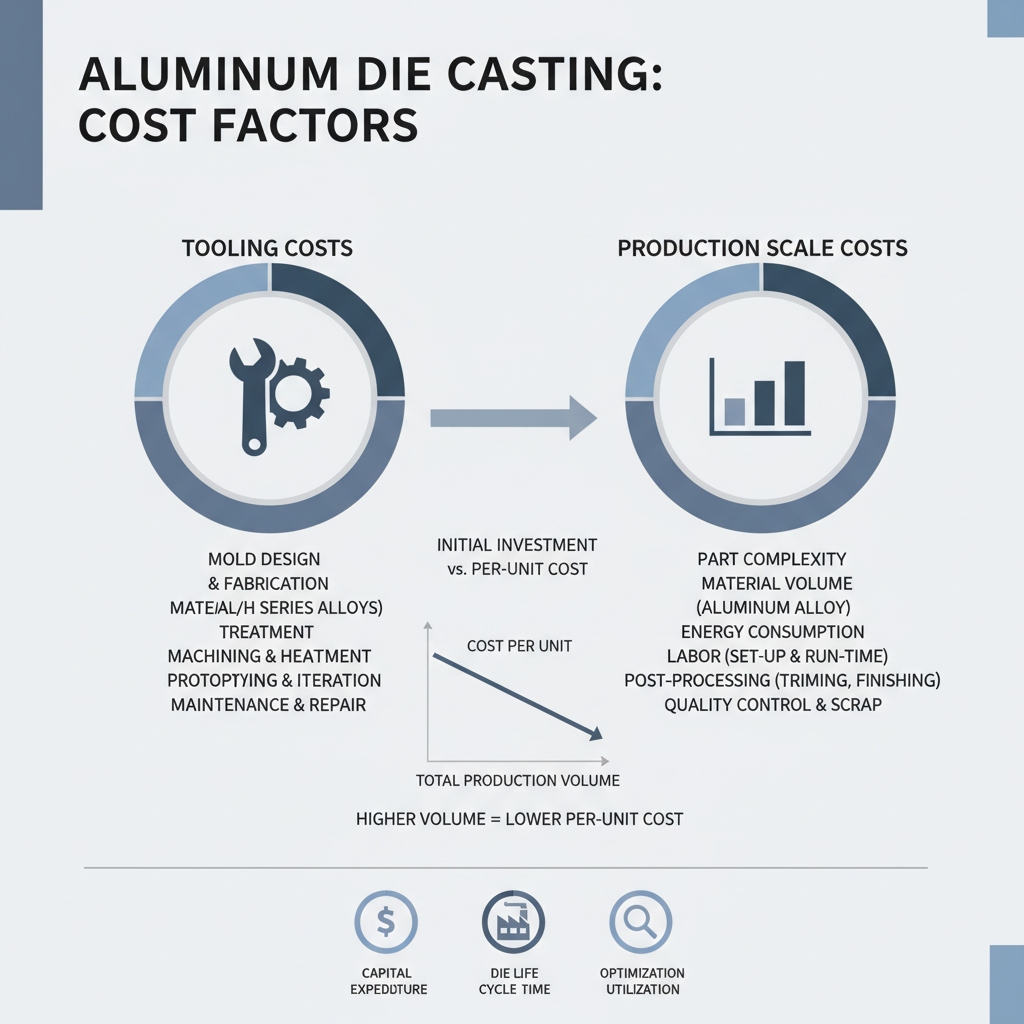
Cost factors in the aluminum die casting industry involve upfront tooling balanced by low per-unit expenses.
Upfront vs. Long-Term Savings
Tooling costs
10,000−100,000initially,butdropsper−partto10,000-100,000 initially, but drops per-part to 10,000−100,000initially,butdropsper−partto
0.50-2.00 at scale, saving 20-30%.
- Tooling: One-time investment.
- Per-unit: Declines with quantity.
- Maintenance: Low ongoing.
Contrast this with ongoing efficiencies.
Volume and Tooling Costs
Higher volumes amortize tooling—costs plummet beyond 1,000 units.
- Low volume: Higher per part.
- High volume: Economies kick in.
- Alloy choice: Affects fluidity/cost.
Budgeting for Your Project?
Include finishing and testing (5-10% of total); simulate to avoid redesigns.
- Prototyping: 10-20% of budget.
- Finishing: Enhances value.
- Total: Scales down 50% at volume.
Key Takeaway: Strategic budgeting unlocks die casting’s affordability.
| Factor | Low Volume Cost | High Volume Cost | |
|---|---|---|---|
| Tooling | High impact | Amortized | |
| Per-Unit | $5-10 | $0.50-2 | |
| Total Savings | Minimal | 30-50% |
Cost analysis shows value strengthens with scale.
10. Future Trends in Aluminum Die Casting Industry

Future trends in the aluminum die casting industry point to automation, simulations, and hybrid materials.
Innovations in Technology
AI simulations predict defects, cutting iterations by 40%; robotics boost speed.
- AI for flow optimization.
- 3D-printed dies for prototypes.
- Sensors for real-time monitoring.
As tech advances, scalability follows.
Scaling for Growth
Modular dies support varied runs; Industry 4.0 enables predictive maintenance.
- Automated lines: 24/7 output.
- Data analytics: Yield improvements.
- Customization: On-demand.
Adapting to Market Shifts
Hybrid alloys enhance lightness for EVs; digitize supply chains.
- Eco-alloys: Lower emissions.
- EV focus: Lighter components.
- Digital twins: Virtual prototyping.
Key Takeaway: Embracing trends positions you for dominance.
| Trend | Benefit | Timeline | |
|---|---|---|---|
| AI Simulations | Defect reduction | Now-5 yrs | |
| Automation | Efficiency gains | Ongoing | |
| Hybrid Materials | Performance boost | 5-10 yrs |
These trends integrate tech to meet B2B challenges.
Conclusion
Aluminum die casting resolves manufacturing hurdles—delays, high costs, and waste—by delivering precise, scalable parts that accelerate production and cut expenses. With its lightweight strength and versatility, it empowers your operations across industries. Contact us at Precisionvast for a custom quote. We pioneer efficient solutions, blending expertise with innovation.
FAQs
Can I use aluminum die casting for prototypes? Yes, but it’s best for mid-to-high volumes; for initial prototypes, consider 3D printing or sand casting to validate designs before tooling.
What tolerances can I achieve with aluminum die casting? ±0.002 inches on dimensions, suitable for precise assemblies—high pressure ensures consistency, though complex features may need machining.
Is aluminum die casting suitable for corrosive environments? Definitely; alloys like A360 and anodizing resist corrosion, ideal for marine or chemical applications.
How long do dies last in aluminum die casting? 50,000-500,000 cycles depending on alloy and care—maintenance extends life for cost control.
Can aluminum die casting handle thin-walled parts? Yes, down to 0.040 inches with the right alloy and design, enabling lightweight components for electronics.
